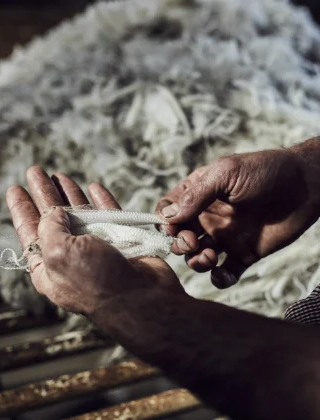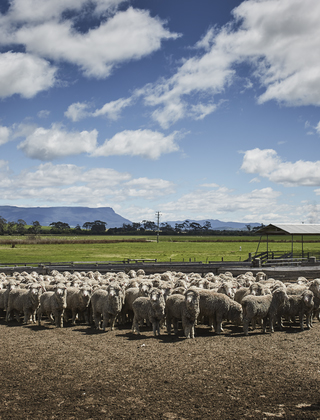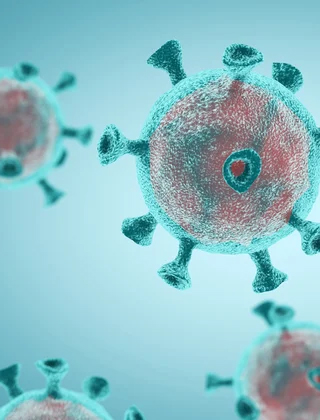I made a coat using my own wool
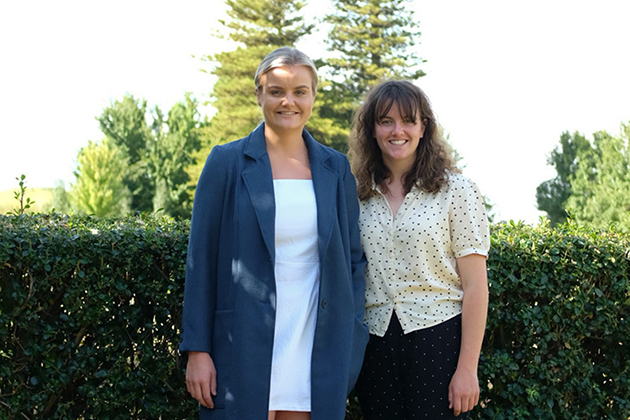
For her Year 12 Product Design and Technology project, Eve Girdwood of Ardmona in central Victoria arranged the processing of wool from her own Perendale flock into fabric which she then used to create a wonderful wool coat.
Eve (right) with her sister Clara who is wearing the coat that Eve made with wool from her own Two Pines Perendale flock.
For her Year 12 Product Design and Technology project, Eve Girdwood of Ardmona in central Victoria arranged the processing of wool from her own Perendale flock into fabric which she then used to create a wonderful wool coat.
With farming history on both sides of her family, Eve Girdwood at the age of 12 decided she wanted a sheep stud. As Eve was to be in charge of looking after the sheep, she chose the dual purpose Perendale breed due to it being easy to care for and a practical size for handling – plus Eve thought they are the best-looking sheep!
Eve started out with three ewes bought from the Pergunyah Perendale Stud near Mansfield owned by Maureen Nissen, who has mentored Eve as she built up her stud from scratch. Six years later and Eve now has about 60 Perendales at her Two Pines Perendale Stud and has won best ram at the Dookie Agricultural Show and reserve supreme champion of the Strong Wool Sheep and Wool Show at Benalla.
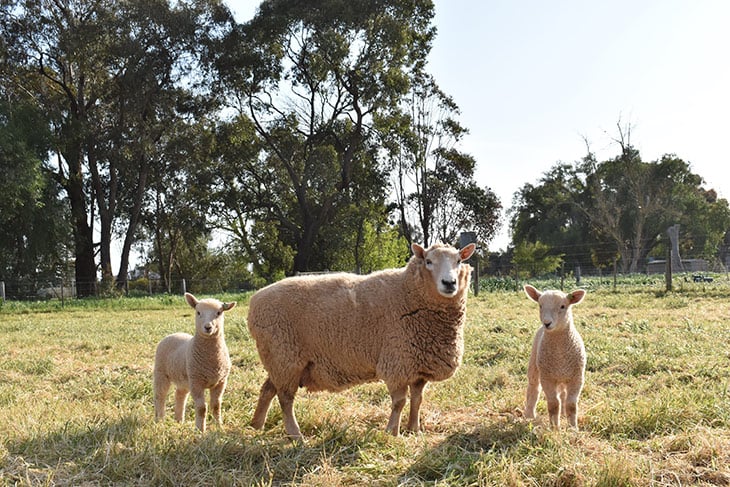
Sue with Elizabeth and Margaret in the paddock (Eve knows all her Perendale sheep by name).
FROM FIBRE TO FABRIC
For her Product Design and Technology portfolio in year 12 at Notre Dame College in Shepparton, Eve chose to produce a coat made using the wool from her own sheep.
“I’m very interested in sustainability and the production of garments, so I decided to do a project in which I could demonstrate the full traceability of a garment right back to the source of the fibre,” Eve said.
The project was focused on the processing and production process rather than the end design. It proved to be a steep learning curve in many ways for Eve, especially finding companies that would take Eve’s relatively small quantity of wool through all the different stages of production. Eve had two bales (178kg) of Perendale wool to process.
“Wool goes through a lot of processing stages before it becomes fabric: including scouring, combing, gilling, carding, spinning, weaving, dyeing… it was a big challenge to get the project off its feet at the start,” Eve said.
“However, Trish Esson from Cashmere Connections at Bacchus Marsh provided me with some great advice regarding finding companies to undertake the processing: rather than working forward through the supply chain by first finding a scourer, she told me it is easier to find connections by working back through the supply chain from the end product.”
For Eve’s project, EP Robinson at Geelong did the scouring, Cashmere Connections did the combing, gilling and carding, Wangaratta Woollen Mills did the spinning, and Geelong Textiles wove and dyed the fabric. Eve herself made the coat.
“The fabric is gorgeous and drapes really well. I’m very appreciative to everyone involved who has helped me along the way. It goes to show how stronger wools can be used to make beautiful and expensive looking apparel,” Eve said.
PROJECT COMPLETION
During the project, the coronavirus hit Victoria which made the assignment even more challenging.
The project took a full year to complete and resulted in, as well as the coat, an A3-sized 83-page folio. It comprised features including mood boards, design options, aesthetics, colours, materials, technologies, manufacturing machinery (including health and safety), production plan and journal, sustainability issues, and legal responsibilities including copyright.
The longtime farmers in Eve’s family were similarly interested to hear about all the stages of processing that Eve’s wool went through after it left the farm.
“The project was about the journey all the way from my own sheep’s wool to the finished garment. People love the provenance of it,” Eve said.
“We produced 80 metres of fabric and used four metres to make the coat, so I now have plenty of fabric left to use on other projects!”
More information: Follow @twopinesperendales on Instagram.
This article appeared in the March 2021 edition of AWI’s Beyond the Bale magazine. Reproduction of the article is encouraged, however prior permission must be obtained from the Editor.






